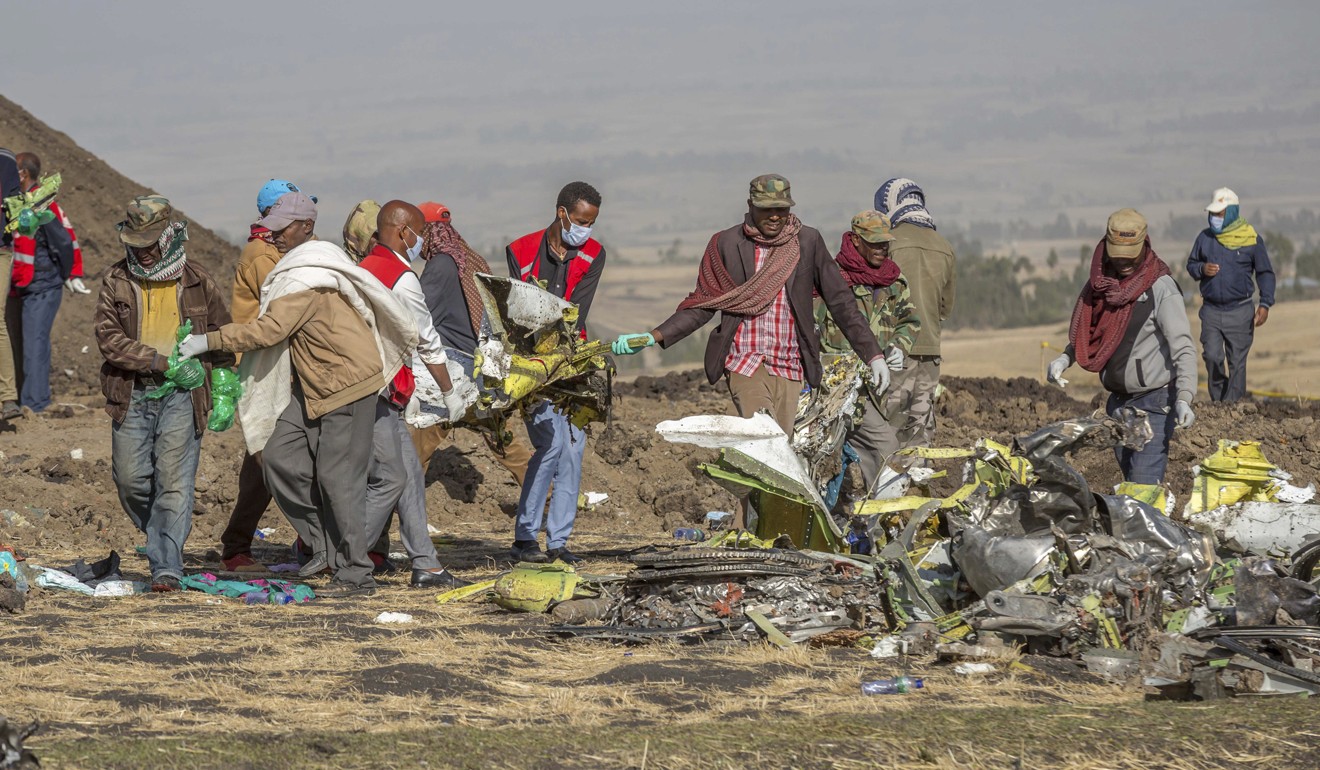
Ethiopian Airlines crew on doomed Boeing 737 MAX 8 jet followed recommended procedures: preliminary report
- According to a preliminary report released by Ethiopia’s government, the flight crew carried out all procedures recommended by Boeing when the jet started to nose dive, but could not save it
- The report was based on data from the recorders of the Boeing 737 MAX 8
Ethiopia black boxes show ‘clear similarities’ with Indonesian crash: authorities
Investigators are looking into the role of a flight-control system known by its acronym, MCAS, which under some circumstances can automatically lower the plane’s nose to prevent an aerodynamic stall.
The MAX has been grounded worldwide pending a software fix that Boeing is rolling out, which still needs approval from the Federal Aviation Administration and other regulators.
The Ethiopian Airlines jet crashed just after taking off from Addis Ababa on March 10, killing all 157 on board.
Ethiopian investigators did not specifically mention the MCAS, but recommended that Boeing review “the aircraft flight control system related to the flight controllability”.
They also recommended that aviation officials verify issues have been adequately addressed before allowing the planes to fly again.
Boeing is the focus of investigations by the US Justice Department, the Transportation Department’s inspector general, and congressional committees.
Investigations are also looking at the role of the Federal Aviation Administration in the US, which certified the Max in 2017 and declined to ground it after the first deadly crash in October.
Investigators believe anti-stall system activated in Ethiopian 737 crash
The FAA said in a statement that it is continuing to work toward a full understanding of what happened and will take appropriate action as findings become available.
David Hasse, an aviation analyst and editor of industry publication airliners.de in Berlin, says it is significant that the report found that the pilots followed the proper procedures, because that links the case more closely to the Lion Air crash.

“What is special about this case is that two crashes seem to have a very, very similar reason,” said Hasse. “This is something that is very rare in aviation. The question is whether the Boeing 737 MAX should have been grounded after the Lion Air crash and before the Ethiopian Airlines crash.”
He noted that crash reports are not meant to assign legal blame and that it is too soon to know what the legal implications might be for Boeing, but it clearly raises the pressure on the company.
“If pilots sit there and follow the rules that have been given to them by the manufacturer, then they should be able to rely on the fact that they are correct,” Hasse said.

